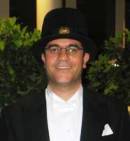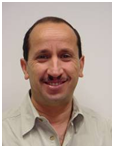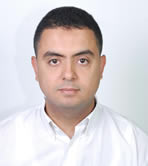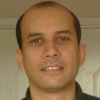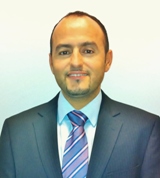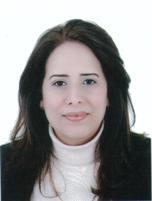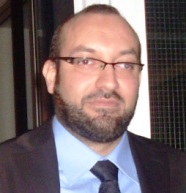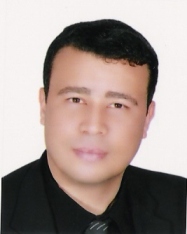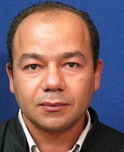|
|
|
Tutorials
Tutorial 1: Software Ecosystems: Benefits and Challenges By Dr Imed Hammouda, Chalmers and University of Gothenburg, (Sweden)
Abstract: Software ecosystems (SECOs) have emerged as a successful approach for the development of complex software systems offering plenty of benefits. A software ecosystem has been defined as a set of businesses functioning as a unit and interacting with a shared market for software and services, together with relationships among them. These relationships are frequently underpinned by a common technological platform and operate through the exchange of information, resources, and artifacts. The technological platform is often represented by a software system enjoying various levels of openness. For companies, evolving an ecosystem’s technological platform represents a complex process, as it needs deep understanding of the SECO phenomenon and the impact of its various facets on platform design decisions. In this talk, we will motivate the ecosystem approach and present an overview of the many aspects of the movement. We will then discuss ongoing work to design a method for assessing ecosystemability, which is defined as the extent to which a software platform, represented by its architecture and its development environment, supports the vision of ecosystem. The discussion will be illustrated through the analysis of a number of case studies. Biography: Dr. Imed Hammouda is an Associate Professor of software engineering at Chalmers and University of Gothenburg, Sweden. His research interests include software ecosystems, open source software, software architecture, software development methods and tools, and variability management. Before moving to Gothenburg, he was Associate Professor at Tampere University of Technology (TUT), Finland. At TUT, he was heading the international masters programme at the Department of Pervasive Computing. He got his Ph.D. in software engineering from TUT in 2005. He was a founding member and leader of TUTOpen - TUT research group on open source software. He has been the principal investigator of several research projects on various open initiatives. Dr. Hammouda's publication record includes over fifty journal and conference papers. He is the general chair of the Twelfth International Conference on Open Source Systems – OSS 2016 – to be held in June 2016 in Gothenburg, Sweden.
Tutorial 2: Les communications multicast By Dr Abdelmajid BOUABDALLAH , université de Compiègnem (France)
Abstract: Biography: Leader of the Communication & Cooperation research of the Excellence Reseach Center LABEX MS2T Research keywords : Security (Cloud computing security, Group communication security, Routing security, P2P security, WSN security) ; Mobility (Mobile IP, Mobile Ad’Hoc and dynamic networks); WSN deployement & architectures; Routing (Multicast communication, sensor networks, mobile networks, DTN networks) ; Quality of service ; Fault Tolerance issues.
Tutorial 3: Top ten hurdles on the race towards the Internet of Things By Dr Aref Meddeb, National School of Engineering, University of Sousse (Tunisia) Abstract: While the Internet is continuously growing and unavoidable moving towards an ubiquitous internetworking technology, ranging from casual data exchange, home entertainment, security, military, healthcare, transportation, and business applications, to the Internet of Things (IoT) where anything can communicate anywhere, anytime, there is an increasing and urgent need to define global standards for future Internet architectures as well as service definitions. In the Future, the Internet will perhaps become the most exciting entertainment mean. It is very likely that we would be able to make 3D conferencing at home, using holographic projection, spatial sound and haptic transmission. Further, we may no longer use traditional devices such as laptop and desktop computers and cell phones. Monitors and speakers will be completely different ranging from 3D-glasses and headsets to 3D-contact lenses, and in-ear wireless earphones. Keyboard and mouse will disappear as well and will be replaced by biometrics such as voice, iris and finger print recognition, and movement detection. Many projects are being proposed to support and promote the Internet of Things worldwide, ranging from Initiatives (http://www.iot-i.eu/public), Alliances (http://www.ipso-alliance.org/), Forums (http://www.iot-forum.eu/), Consortiums (http://iofthings.org/), Architectures (http://www.iot-a.eu/), Research Clusters (http://www.internet-of-things-research.eu/), and the list goes on. There is seemingly a race towards the leadership on the Internet of things, to the extent that often, driven by "time-to-market" constraints and business requirements, most proposals made so far fail to consider all facets required to deliver the expected services, and often lead to ambiguous and even contradictory definitions of what the Internet of Things is meant to be. For example, some proposals assimilate IoT to Web 3.0, while others claim it is primarily based on RFID and systems alike. Between web semantics and cognitive radio communications, there is a huge gap that needs to be filled out by adequate communication, security, and application software and hardware. Unfortunately, so far, there is no general consensus on the most suitable underlying technology and applications that will help the Internet of Things become a reality. In this talk, we describe ten of the most challenging hurdles that IoT actors need to face in order to reach their goals. Among these hurdles, we identify the top-ten issues as 1) how to safely migrate from IPv4 to IPv6 given the proliferation of IPv4 devices, 2) Regulation, Pricing and Neutrality of the Future Internet, 3) OAM tools required for accounting and monitoring Future Internet Services, 4) Future Quality of Service definitions and mechanisms, 5) Reliability of Future Internet Services, 6) Future Security Challenges, 7) Scalability of the Internet of Things with its billions of interworked devices, 8) Future Access (local loop) technologies, 9) Future Transport (long distance) telecommunication technologies, and 10) Future End-user Devices and Applications. We aim to briefly explain and highlight the impact of each one of these issues on the service delivery in the context of the Internet of things. We also intend to describe some existing and promising solutions available so far. Biography:
Tutorial 4: Elastic-R: Connecting the dots of scientific computing, from the pi to the clouds By Dr Karim Chine Abstract: We are witnessing today the rise of major technologies and trends that have the potential to reshape the current landscape in research, education and beyond:
With ElasticR, we propose a new technologyfor bridging the gap between all these capabilities and for making the revolutionary potential of their combination becomesaccessible to everyone. Elastic-R is a virtual data science platform enabling everyone to use cloud computing seamlessly and work with R, python and many other data analysis tools in a productive and collaborative way. Elastic-R takes care transparently of security, resources creation and management, connectivity and sharing and helps leveraging all available compute facilities could they be supercomputers, public or private clouds, clusters, PCs or even Raspberry Pis. The platform makes everything programmable, traceable and reproducible in a consistent manner. Moreover, it provides frameworks for science gateways, interactive applications and services' building and publishing that anyone can use without prior IT knowledge. Elastic-R aims at making the interaction between scientists and the compute technologies and tools easier than ever and at dramatically reducing the frictions that reduce researchers' productivity and their ability to collaborate, share and reuse. The presentation will give an overview of ElasticR core capabilities and the rationale behind its design. Live demonstrations will illustrate the problems and the proposed solutions. Biography: Est le fondateur de l’entreprise Cloudera Ltd Juillet 2008 et il est expert en cloud computing auprès de la commission européenne. Il a mis au point « Elastic –R » , le premier environnement virtuel collaboratif pour le calcul statistique et scientifique sur les clouds publics . Elastic -R a été sélectionné à la " technologies de rupture " piste lors de la conférence internationale sur le calcul haute performance ( SC10 ) et pour les Prix de l'Innovation IET 2009 . A fait des présentations et des didacticiels dans les grandes universités et centres de recherche ( Oxford , Cambridge , Berkeley , Stanford , Microsoft recherche , Yahoo recherche , Google , etc ) et à des conférences internationales importantes (4e conférence IEEE sur l'e- Science, SC09 , SC10 , BioIT mondiale 2009, 2010 et 2011 , ICALT 2010, useR 2008, 2009 , 2010, 2012 et 2013 , WETICE 2013, QCon 2013, etc.) A tavaillé à l’Imperial College de Londres,à Oxford , Chez ILOG, Air France, à Schlumberger est ingénieur de SUPCOM Paris et l’école Polytechnique de Paris Tutorial 5: : Intelligent Transportation Systems and Mobility By Dr Fethi Filali ,
Abstract: Biography: Dr. Fethi Filali is a Senior R&D Expert and Technology Lead at Qatar Mobility Innovations Center (QMIC) with more than fifteen years of experience in distributed intelligent systems and communication networks including wireless networking, mobile applications and services, and end-to-end large-scale smart services and solutions. He is the ITS technology lead at QMIC responsible for developing advanced technologies, algorithms, and protocols, for the innovative ITS MasarakTM and Connected Cars platforms and services. Prior to this, from September 2003 to December 2010, he was Associate Professor at EURECOM, France where he was coordinating several European and national research projects in the area of wireless networks and intelligent transportation systems. He was the Ph.D. Supervisor of eight Ph.D. students in the area of computer networking, wireless sensor and mesh networks, vehicular communications, and mobility management. He holds a PhD in Computer Science from the University of Nice Sophia-Antipolis (2002). In 2008, he was awarded the Habilitation degree for his extensive research in wireless networks and services. He has published more than 100 journal and conference papers and holds several patents. Tutorial 6: On Cognitive Radio Networks : Overview and Research Challenges By Dr. Hanen IDOUDI, National School of Computer Science (ENSI), University of Manouba, Tunisia
Abstract: Cognitive radio is an emerging paradigm, which was conceived to overcome the shortage of the unlicensed spectrum bands (2.4GHz and 5GHz). Recent studies conducted by the Federal Communication Commission (FCC) showed that many licensed spectrum bands, such as the TV bands, are underutilized whereas the unlicensed one are overcrowded. New emerging schemes, such as IEEE 802.22, propose to exploit these white bands for data transmission as long as no licensed users are accessing them. Cognitive radio networks (CRN) are envisioned to alleviate the shortage of spectrum by defining more smart and flexible wireless networks that can dynamically optimize spectrum usage. The utilization of such networks is still a challenging problem that raises several open research paradigms and security concerns. In this tutorial, we will discuss the basic aspects describing the operation, architecture and applications of CRN as well as the standardization in this area. We will also introduce the current challenges facing CRN and, in particular, dynamic spectrum access (DSA) mechanisms and the security challenges of these networks.
Biography: Hanen Idoudi earned her engineering and master degrees in computer science at the National School of Computer Science (ENSI), Tunisia in 2001 and 2002, respectively. She received her Ph.D degree in 2008 jointly from ENSI and University of Rennes 1, France. She was member of IRISA, INRIA, Rennes from 2005 to 2008. She is currently an associate professor at ENSI and a member researcher in the CRISTAL laboratory. Also, since 2011, she is a visiting scientist at IRIT-University of Toulouse, France for several short visits. Her research focuses on issues related to wireless networking, ad hoc, sensor, mesh and cognitive radio networks, MAC optimization, networks modeling and performances, routing, quality of service (QoS), energy conservation, cross-layer designs, etc. Previously, she worked as a lecturer at the “Institut Supérieur des Arts Multimédia” (ISAMM)(2003-2005). Besides, she has industrial experience in computer networks administration and security while she worked as an engineer then as a training manager at Opennet MEA in Tunisia (2001-2004). She is an expert for many international organizations such as LPI-Central Europe, LPI-Canada and AUF (Agence Universitaire de la Francophonie). She is member of several scientific societies and associations such as ISOC and IEEE and an ICANN Fellow. Tutorial 7: Advanced Signal and Image Processing in Wireless Sensor Networks By Dr Hichem Snoussi - Université de Technologie de Troyes (France)
Abstract: The aim of this tutorial is to give an overview of recent advances in distributed signal/image processing in wireless sensor networks. Over the past few years, wireless sensor networks received tremendous attention for monitoring physical phenomena and for target tracking in a wide region or a critical infrastructure under surveillance. With such systems, the automatic monitoring of an event or an incident is based on the reliability of the network to provide an efficient and robust decision-making. Applying conventional signal/image techniques for distributed information processing is inappropriate for wireless sensor networks, since the computational complexity scales badly with the number of available sensors and their limited energy/memory resources. For this purpose, collaborative information processing in sensor networks is becoming a very attractive field of research. The sensors have the ability to collaborate and exchange information to ensure an optimal decision-making. In this tutorial, we review recently proposed collaborative strategies for self-localization, target tracking and nonlinear functional estimation (nonlinear regression), in a distributed wireless sensor network. The collaborative strategy ensures the efficiency and the robustness of the data processing, while limiting the required communication bandwidth. Signal processing challenges in mobile ad-hoc sensor networks will also be considered in this tutorial. Biography: Hichem Snoussi was born in Bizerta, Tunisia, in 1976. He received the diploma degree in electrical engineering from the Ecole Superieure d'Electricite (Supélec), Gif-sur-Yvette, France, in 2000. He also received the DEA degree and the Ph.D. in signal processing from the University of Paris-Sud, Orsay, France, in 2000 and 2003 respectively. Between 2003 and 2004, he was postdoctoral researcher at IRCCyN, Institut de Recherches en Communications et Cybernétiques de Nantes. He has spent short periods as visiting scientist at the Brain Science Institute, RIKEN, Japan and Olin Neuropsychiatry Research Center at the Institute of Living in USA. Between 2005 and 2009, he was associate professor at the University of Technology of Troyes, France. He has obtained the HDR degree from the University of Technology of Compiègne in 2009. Since 2010, he is Full Professor at the University of Technology of Troyes. His research interests include Bayesian techniques for source separation, information geometry, differential geometry, machine learning, robust statistics, with application to brain signal processing, astrophysics, advanced collaborative signal/image processing techniques in wireless sensor/cameras networks,.. Tutorial 8: Les réseaux sans fil et les réseaux mobiles By Dr Nizar Bouabellah, Faculty of Science of Gabès (Tunisie) Résumé: Biographie: Nizar Bouabdallah received the B.S. degree in telecommunications engineering from Ecole Superieurdes Communications (Sup'Com), Tunis, Tunisia, in 2001, and the M.S. and Ph.D. degrees in networking and computer science from the University of Paris VI, Paris, France, in 2002 and 2004, respectively. He also received the HDR degree (Habilitation à Diriger des Recherches) in computer science from the University de Rennes 1 in 2009. He joined Alcatel Research Laboratories,Marcoussis, France, from 2002 to 2004, while working on his Ph.D. degree. In 2005, he was with the North Carolina State University, Raleigh, NC, USA, as a Postdoctoral Fellow. He is currently aresearcher at INRIA (Institut National de Recherche en Informatique et en Automatique). In 2007, he spent six months as a Visiting Researcher at the School of Computer Science, University ofWaterloo, Waterloo, ON, Canada. His research interests include wireless mesh and sensor networks, optical networking, resource allocation under QoS, network planning and modeling, as well as performance evaluation.
Tutorial 9: An overview of proof by induction techniques Application in the Verification of security protocols By Dr Adel Bouhoula , Higher School of Communications of Tunis (Sup’Com), University of Carthage (Tunisia)
Abstract: Algebraic specifications provide a powerful method for the specification of abstract data types in programming languages and security software systems. Often, algebraic specifications are built with conditional equations. Semantically, the motivation for this is the existence of initial models; operationally, the motivation is the ability to use term rewriting techniques for computing and automatic prototyping. The formal development of a system might give rise to many proof obligations. We must prove the completeness and the ground confluence of the specification and the validity of some inductive properties. In this talk, we will present procedures to test sufficient completeness and ground confluence and to prove or disprove inductive properties. Algebraic specifications and formal methods are also used to analyze and verify security protocols which allow agents to communicate securely over an insecure network. We will give in the last part of this talk some techniques both for the verification of security protocols and for identifying attacks on faulty protocols. Biography: Adel Bouhoula received in 1990 the Diploma degree in computer engineering with Distinction from the University of Tunis (Tunisia). In 1991, he received a Master’s degree, in 1994 a PhD degree with Distinction and in 1998 the Habilitation degree all in computer science from Henri Poincare University in Nancy (France). Adel Bouhoula is currently a Professor at the Sup’Com Engineering School of Telecommunications in Tunisia and a Visiting Professor at the University of Tsukuba in Japan. He is also the Founder and Head of the « Digital Security » Research Unit, the Founder and President of the Tunisian Society for Digital Security, the Head of the national steering committee of the Tunisian Collegiate Programming Contest « ACM TCPC », and a member of the executive committee of the Tunisia-Japan Friendship Association. Adel Bouhoula has been in the past the Chairman and CEO of the Research Institute for Computer Science and Telecommunication in Tunisia (IRSIT). Prior to that, he has been the Director of Information Technologies and Networks at “Tunisie Telecom” and a Senior Researcher with the INRIA French National Institute for Research in Computer Science and Control in France. He has also been a Member of the High Level Committee for Science and Technology in Tunisia,
Tutorial 10: Mobilité et consommation d'énergie dans les réseaux hétérogènes et 5G By Dr Badii Jouaber
Abstract: Biography: Dr Badii Jouaber holds a PhD (1998) in Computer Science. He joined Alcatel-CIT in 1999 where he contributed to the specification and optimization of the Alcatel GPRS solutions. He then moved to Telecom Sud Paris in 2002 where he is currently an Associate Professor within the wireless and mobile networking department. His main research interests include end-to-end Quality of Service, mobile networks (GPRS, UMTS), traffic management and resource optimization.
|
| Online user: 1 | eRSS Feed |

|

